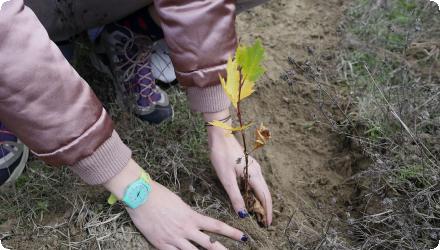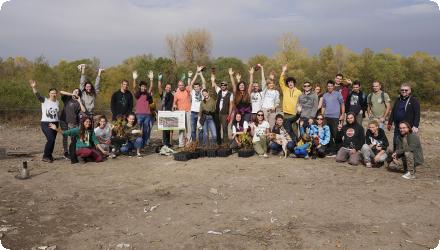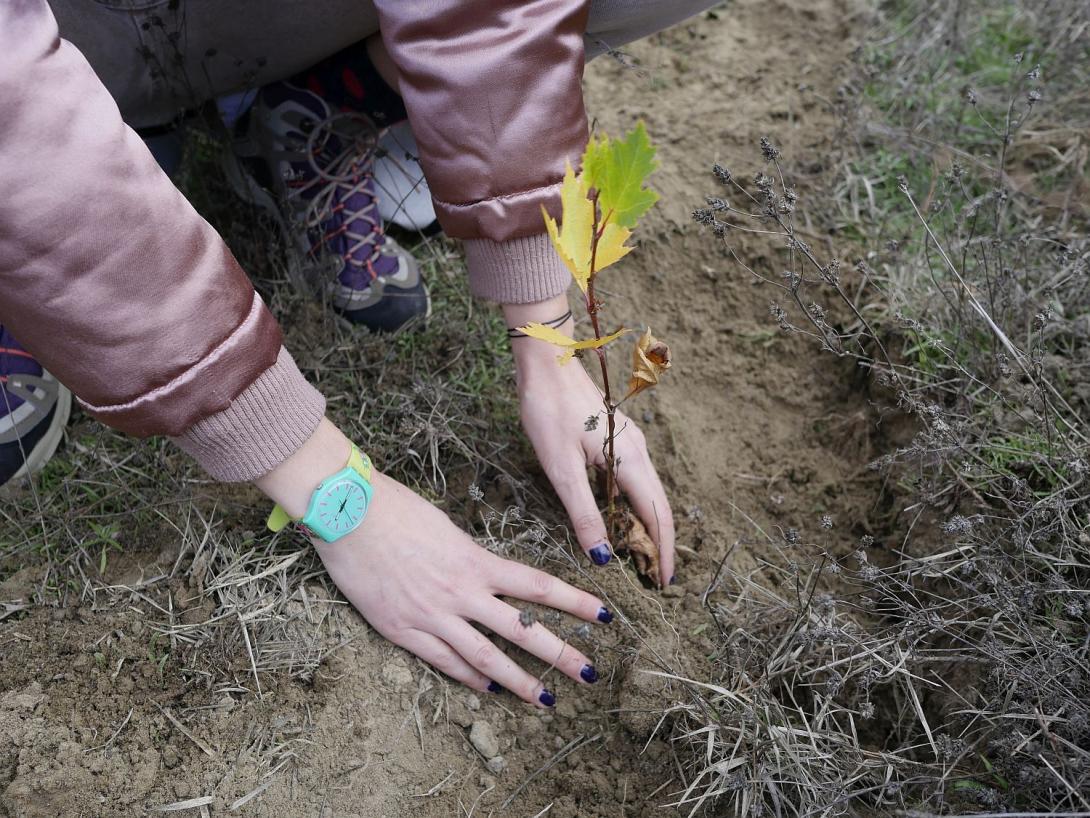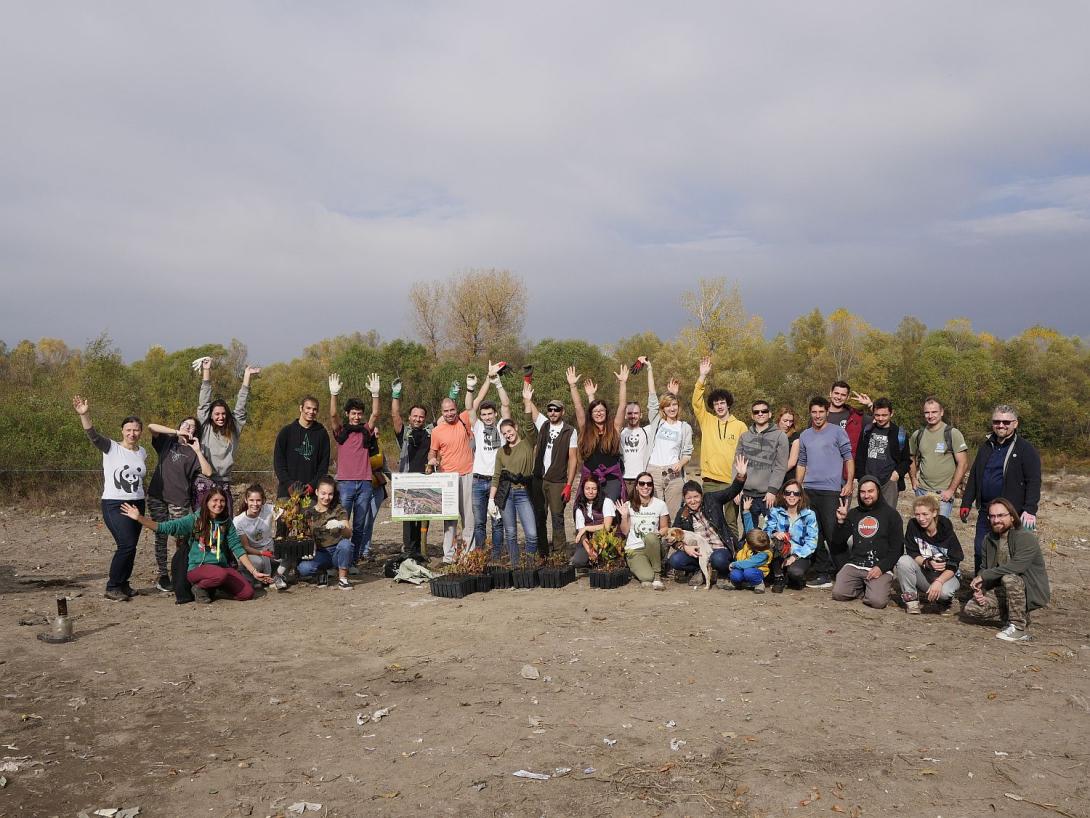Last update
2025
Summary
Restoration and conservation of riparian forests along the Maritsa in the protected area “Reka Maritsa” (Natura 2000 BG0000578). Led by the Municipality of Dimitrovgrad; reported as completed in 2012, with administrative closure in 2015. Actions combined habitat recovery with risk-aware design: a hydro-hydraulic assessment of flood conveyance; riverbank clean-up (~24 daa) and maintenance of habitat fragments (~809 daa); collection and production of native planting material (willow, poplar, oak, elm, ash, alder); installation of fish shelters targeting Aspius aspius; nest boxes and awareness activities. Subsequent programmes extended the effort along the Maritsa. Under LIFE13 NAT/BG/000801 (2014–2019), 48.1 ha of riparian forest were restored nationally, including 160 daa on the Maritsa, using local species. Planting at “Merich Orman” in 2016 (47,960 seedlings, seven native species) and later community initiatives kept momentum on riverbank restoration. In 2024, a public consultation to adopt the national order for site BG0000578 clarified and strengthened the legal framework for future management and long-term conservation of these riparian habitats.
Position
Latitude
42.06527
Longitude
25.63861
Project
NWRM
National Id
Bulgaria_08
Installation date
2012-02
Contact
REC
RBD code
BG3000
Transboundary
0
Photo gallery
Location of the project
Along the Maritsa River within Dimitrovgrad Municipality (Haskovo Province), inside Natura 2000 site “Reka Maritsa” (BG0000578).
NUTS Code
BG42 - Южен централен (Yuzhen tsentralen)
Project's objectives
Prepare a hydro-hydraulic assessment to check flood-conveyance compatibility of actions along ~10 km of river reach and to inform the design of fish shelters.
Clean up ~24 decares (daa) of scattered construction/household waste to free areas for restoration.
Tend/rehabilitate existing habitat fragments over 809.63 daa (pruning, mowing, weeding, removing diseased/dry material; >2 daa vegetation or >1,600 trees, mostly willows).
Reintroduce five conservation-significant plant species (Euphorbia lucida, Leucojum aestivum, Typha schuttleworthii, Lemna gibba, Utricularia vulgaris) via 550 bundles.
Protect restored areas from grazing with ~3,150 m of electric fencing.
Run 15 field actions with youth; deliver ≥ 50 school talks; produce materials (leaflet 5,000; flyer 10,000; poster 1,000; desk calendar 1,000; stickers 5,000); make a 5-min video; mount a 10-panel portable exhibition; install 5 information boards; set up an interactive touchscreen at the municipality; create a biotope aquarium for target fish species; hold 4 press conferences; and maintain web updates.
Clean up ~24 decares (daa) of scattered construction/household waste to free areas for restoration.
Tend/rehabilitate existing habitat fragments over 809.63 daa (pruning, mowing, weeding, removing diseased/dry material; >2 daa vegetation or >1,600 trees, mostly willows).
Reintroduce five conservation-significant plant species (Euphorbia lucida, Leucojum aestivum, Typha schuttleworthii, Lemna gibba, Utricularia vulgaris) via 550 bundles.
Protect restored areas from grazing with ~3,150 m of electric fencing.
Run 15 field actions with youth; deliver ≥ 50 school talks; produce materials (leaflet 5,000; flyer 10,000; poster 1,000; desk calendar 1,000; stickers 5,000); make a 5-min video; mount a 10-panel portable exhibition; install 5 information boards; set up an interactive touchscreen at the municipality; create a biotope aquarium for target fish species; hold 4 press conferences; and maintain web updates.
Involved Partners
| Authority type | Authority name | Role | Comments |
|---|---|---|---|
Climate zone
warm temperate dry
Temperature
12,6
Precipitation
525
Evapotranspiration
669
Elevation range
90 m
Slope range
7.3
Vegetation class
Predominantly riparian forests/gallery forests: habitat types 92A0 (Salix alba & Populus alba galleries) and 91F0 (riparian mixed forests of Quercus/Ulmus/Fraxinus)
Water bodies: Ecological Status
Moderate
Water bodies: Chemical Status
Failing to achieve good
Water quality status
Significant pressures from industrial discharges in the Maritsa basin
Project scale
Meso
Project scale specification
The Dimitrovgrad municipal project restores riparian forests along a river reach of the Maritsa inside Natura 2000 site “Reka Maritsa” (BG0000578). The approved work program explicitly covers an ~10 km target section of the river (hydro-hydraulic assessment scope) with multiple intervention plots (habitat tending on ~809 daa; clean-ups on ~24 daa), i.e., broader than a single site but limited to a segment of the river corridor, not a whole basin or country.
Total cost
€851,000
Financing authorities
Type of funding
EU-funds: Cohesion and regional development funds
Comments
Operative program: Environment 2007-2013
Type of funding
EU-funds: LIFE+
Comments
LIFE project LIFE13 NAT/BG/000801 – “Riparian Forests” (2014–2019) had a total budget of €537,056, co-financed by the EU LIFE Programme
Compensations
0
Policy context
Along the Maritsa in Dimitrovgrad (within Natura 2000 SAC BG0000578 “Reka Maritsa”), the riparian corridor is heavily altered: parts of the reach are entirely diked, banks are largely deforested (≈95%), and there are multiple sand-/gravel-extraction ponds. These changes degrade Annex I riparian habitats (92A0, 91F0, 91E0*) and fish habitats. The municipal project therefore set out to restore riparian forests and river-margin structure, remove dumped waste (~24 daa), tend degraded habitat fragments (~809.63 daa), and install fish refuges, with a hydro-hydraulic study to ensure actions would not impair flood conveyance.
Land ownership
Municipality of Dimitrovgrad
Community involvment
Yes
Design consultation activity
| Activity stage | Name | Key issues | Comments |
|---|---|---|---|
|
Implementation phase
|
15 youth field actions (tree planting, nest-box installation), ≥50 school talks, and large outreach outputs: leaflet 5,000, flyer 10,000, poster 1,000, desk calendar 1,000, stickers 5,000; plus 4 press conferences, 5 on-site information boards, an interactive touchscreen in the municipal hall, and a biotope aquarium in the Raynovo information centre.
|
Policy target
| Target purpose |
|---|
|
Improved Biodiversity
|
|
Pollutants Removal
|
|
Oher Societal Benefits
|
Target Remarks
Restore and ensure the long-term conservation of habitats and species in Natura 2000 site “Reka Maritsa” within Dimitrovgrad municipality.
Policy pressure
| Pressure directive | Relevant pressure |
|---|
Pressures remarks
Hydromorphological alteration
Policy impact
| Impact directive | Relevant impact |
|---|
Requirement directive
| Requirement directive | Specification |
|---|
Contractual arrangements
0
| Arrangement type | Responsibility | Role | Name | Comments |
|---|
Part of wider plan
0
Wider plan type
| Wider plan type | Wider plan focus | Name | Comments |
|---|
Unknown
Public engagement & education
Local amenity & sanitation co-benefit
Local amenity & sanitation co-benefit
Information on Water quality overall improvements
The municipal project included clean-up of ~24 daa (2.4 ha) of scattered construction/household waste to free space for habitat restoration (a direct pressure reduction)
The reach has suffered episodic nitrogen pollution incidents (e.g., July 2020 exceedances for nitrite ~358×, nitrate ~10×, ammonium ~2× at the Neochim discharge; water supply to settlements was temporarily halted), showing persistent external water-quality pressures unrelated to the planting itself.
The reach has suffered episodic nitrogen pollution incidents (e.g., July 2020 exceedances for nitrite ~358×, nitrate ~10×, ammonium ~2× at the Neochim discharge; water supply to settlements was temporarily halted), showing persistent external water-quality pressures unrelated to the planting itself.
1
14.2 ha of 91E0 alluvial forests were restored (12.8 ha at Merich orman and 1.4 ha at Gushterova odaya). An adapted Saarland method to thin invasives/improve stand structure was applied on 1.8 ha within BG0000578 (plus 22.3 ha on the Danube site). These actions increase habitat coverage within the SCI from a mapped baseline of 0.43 ha (mapping project) and could raise the share to ~0.1% of the SCI if stands persist. Current official conservation status remains “unfavourable–unsatisfactory.”
Planting totals include 47,960 saplings at Merich orman and ~7,000 at Gushterova odaya (species mix: Quercus robur, Ulmus spp., Fraxinus angustifolia, Alnus spp., Populus nigra, Salix alba, etc.). Monitoring in autumn 2018 recorded ~59% survival at Merich orman and ~27% at Gushterova odaya (vs ~80% in the Danube site), with drought and drainage cited as causes; strategies were adapted (autumn re-planting, more resilient species).
The Saarland method and follow-up tending targeted invasive removal and structure improvement on ≥24.1 ha across both project sites.
Planting totals include 47,960 saplings at Merich orman and ~7,000 at Gushterova odaya (species mix: Quercus robur, Ulmus spp., Fraxinus angustifolia, Alnus spp., Populus nigra, Salix alba, etc.). Monitoring in autumn 2018 recorded ~59% survival at Merich orman and ~27% at Gushterova odaya (vs ~80% in the Danube site), with drought and drainage cited as causes; strategies were adapted (autumn re-planting, more resilient species).
The Saarland method and follow-up tending targeted invasive removal and structure improvement on ≥24.1 ha across both project sites.
Ecosystem impact climate regulation
No information available
Key lessons
Planning of measures in places with existing infrastructure (bridges, roads, sand pits) need coordination with respective institutions in early phase and following strrictly the approval procedures in order to avoid risks for implementation. Detailed geodesic surveys are necessary during the technical design phase.
Rigorous screening up front reduces implementation risk. The Dimitrovgrad project built in a hydrological–hydraulic assessment over ~10 km to ensure plantings and planned fish shelters would not impair flood conveyance - an approach that should be standard wherever levees and extraction ponds constrain the river corridor.
Adaptive management matters. Post-planting monitoring found low survival at one Maritsa plot (≈27%) due to drought and a lowered riverbed/groundwater; managers changed species mixes and planting season, and increased replenishment and watering.
Embed responsibilities for aftercare and monitoring. Long-term tending (watering, sprout removal, replanting) and annual stand inventories by the forestry authorities, framed by Natura 2000 obligations and LIFE follow-up, were crucial to keep the restoration on track.
External pressures can wipe out gains. Hydromorphological alteration (dikes, gravel pits) and episodic industrial pollution on the Maritsa show that riparian restoration must be paired with basin-scale controls and enforcement under the RBMP.
Rigorous screening up front reduces implementation risk. The Dimitrovgrad project built in a hydrological–hydraulic assessment over ~10 km to ensure plantings and planned fish shelters would not impair flood conveyance - an approach that should be standard wherever levees and extraction ponds constrain the river corridor.
Adaptive management matters. Post-planting monitoring found low survival at one Maritsa plot (≈27%) due to drought and a lowered riverbed/groundwater; managers changed species mixes and planting season, and increased replenishment and watering.
Embed responsibilities for aftercare and monitoring. Long-term tending (watering, sprout removal, replanting) and annual stand inventories by the forestry authorities, framed by Natura 2000 obligations and LIFE follow-up, were crucial to keep the restoration on track.
External pressures can wipe out gains. Hydromorphological alteration (dikes, gravel pits) and episodic industrial pollution on the Maritsa show that riparian restoration must be paired with basin-scale controls and enforcement under the RBMP.
Success factor(s)
| Success factor type | Success factor role | Comments | Order |
|---|---|---|---|
|
Conducted assessments (incl. economic)
|
main factor
|
Up-front hydro-hydraulic study and detailed surveying to de-risk works in a heavily engineered reach. |
|
|
Successful coordination between authorities
|
main factor
|
Clear policy frame and funding continuity (Natura 2000 + LIFE), enabling after-LIFE actions on the same site. |
|
|
Other
|
secondary factor
|
Adaptive silviculture using local riparian species and structured methods (e.g., Saarland method) to improve stand condition. |
|
|
Public participation
|
main factor
|
Community/outreach components that improve site stewardship and reduce anthropogenic pressures. |
Driver
| Driver type | Driver role | Comments | Order |
|---|
English



